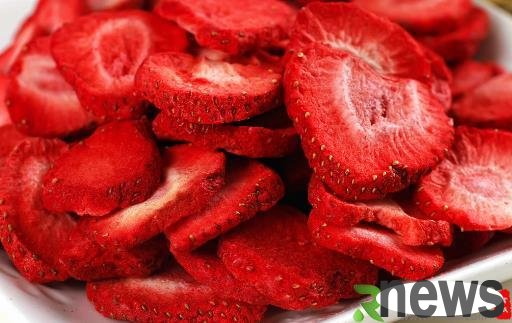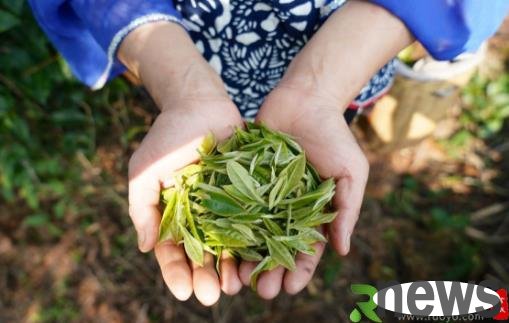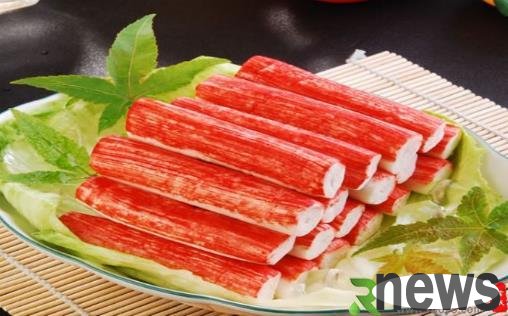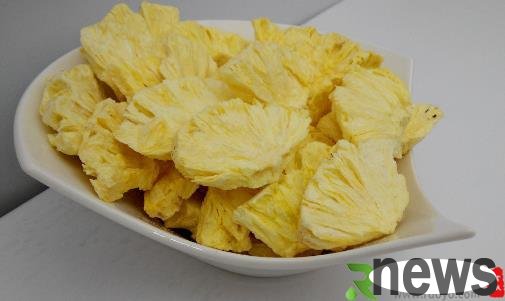Learn to keep food fresh and healthy and save money Contemporary preservation technology popularization
Food is a necessity for human survival, so food preservation has become one of the oldest technologies used by humans. In daily life, there are many tips to make yourself a master of life, especially food preservation. If you put some thoughts on it, you will not only be healthy, but also save money. Today, the editor will share food preservation methods and learn together!

1. Strawberries rot
Fresh strawberries bought from supermarkets will be put in the refrigerator for two days, and some parts will begin to rot or mold. This is because the strawberries have high moisture content and thin skin, which is very susceptible to damage and soften and rot.
Strawberries are usually soaked in calcium lactate solution to achieve the purpose of keeping fresh. It is difficult to tell which preservative is sprayed from the appearance, but they are harmless to the human body, but this type of preservative is not very long-lasting, and strawberries are like facing the fate of a bad end.
When cleaning strawberries, add a few drops of apple cider vinegar or white vinegar to clean water and gently rub the surface of the strawberries to remove most of the fresh preservatives, which can keep the strawberries stored in the refrigerator fresh and not prone to rot.
2. Bananas turn black
Due to their own characteristics, bananas will grow a few "black spots" after being exposed for a few more days, and many people dare not eat them.
The epidermal cells of bananas contain an oxidative enzyme. It is wrapped tightly in the cell membrane, but once it is squeezed or frozen, the cell membrane ruptures, and the oxidative enzymes flow out and oxidize, resulting in a black compound.
As long as you wrap the banana stems in fresh-keeping paper to reduce the exposure of ethylene with ripening effect, it can extend its storage time, and it is more effective to pack a few separate pieces.

3. Tea is damp
People who like to drink tea believe that there are a lot of tea in the cabinet. Some tea leaves that are improperly stored and poorly sealed are prone to moisture and deterioration, and cannot taste the most primitive aroma.
Tea has the characteristic of "absorbing moisture". Many people expose the moisture-inducing tea, which will make the tea taste distasteful. The best way is to use a clean pot and fry the tea leaves on a low heat until the water vapor disappears, then cool down and seal it. The tea aroma is less loss.
4. Once the bread is stored incorrectly, it will become moldy. If you eat it without discovering it, it will easily cause a gastrointestinal revolution.
In addition, if you can't finish a whole bread in three or two days, it will easily become dry and hard after being stored for a long time. How to solve this problem?
In the bread packaging, put one or two pieces of celery to tighten the bag. The moisture contained in it can keep the bread "moisturize" and keep fresh at any time, and you can eat soft bread at any time.

5. The vacuum packaging of meat is
Pork, chicken, salmon, etc., and it is always hard and frozen. It takes a long time to thaw.
How to keep fresh meat tolerant and better meat quality?
First, fill a large container with clear water. Next, place the fresh meat in a sealed bag, and put the sealing strips together, leaving only a small opening.
Put the sealed bag into the water, squeeze out the air in the bag through water pressure, until the sealing strip is close to the water surface, and completely seal the bag to achieve the effect of vacuum packaging.
At this time, you can see that there is not much air left in the bag. After wiping the moisture outside the bag, you can put it in the refrigerator for storage to allow the food to keep fresh for a long time.
Fresh preservation technology:
Refrigeration and freezing
Refrigeration and freezing are perhaps the most widely used methods of food preservation today. The purpose of refrigeration is to slow down bacterial action so that the food can be kept longer (it can be kept fresh for about a week or two, rather than just half a day). The purpose of freezing is to prevent all bacteria from acting, because bacteria will completely lose their activity under freezing conditions.
Refrigeration and freezing are suitable for almost all foods: meat, fruits, vegetables and beverages. Generally speaking, refrigeration has no effect on the taste and texture of the food. Freezing has no effect on the taste and texture of most meats, and has very little effect on vegetables, but it completely changes the texture of the fruit (the flesh will turn into a paste). Because refrigeration has little effect on food, it has been widely used.
Canned manufacturing
About 1825, manufacturing canned food has become a way for people to preserve food, and it has been stored for quite a long time. During the manufacturing process of canned food, put the food in the can and boil it to achieve a sterilization effect, and then seal it (can be before or when the food is boiling), so that no new bacteria will enter. Since the food in the jar has been completely sterilized, it will not deteriorate. Once you open the can, bacteria will enter and invade the food, so you must "refrigerate after opening" (the word "in" is on various food labels - this means that the food inside is sterile before the packaging is opened).
We usually think of "can boxes" as metal products, but in fact many sealed containers can be used to make can boxes. For example, a glass bottle can be boiled and sterilized and sealed. Soft bags and boxes made of foil or plastic materials are also OK. The boxed milk on the shelves is "canned" milk. The milk in the box is treated aseptic (processed by ultra-high temperature transient sterilization) and sealed in the box, so the milk will not deteriorate even at room temperature.
Canned food has one disadvantage, that is, the taste and texture of the food will change during boiling (and the nutrients also change), which is why people prefer refrigeration or freezing methods.

Dehydrate and freshly preserved
Many foods are preserved by dehydration. You can see these dehydrated products when you walk into any grocery store:
1. Milk powder
2. Boxed dehydrated potatoes
3. Dried fruits and dried vegetables
4. Air-dried meat (such as jerky beef)
5. Soup powder and sauce powder
6. Pasta
7. Quick cook rice
Since most bacteria die or are completely inactive after drying, dehydrated foods can be kept under sealing conditions for a long time.
Usually, complete dehydration changes the taste and texture of the food. But in many cases, total dehydration can also create a brand new food that people like too.
freeze-drying and preserving
freeze-drying (freeze-drying) is a special drying technology that achieves the purpose of preserving freshness by removing moisture from food, but its impact on the taste of food is much smaller than that of general dehydration techniques.
During the freeze-drying process, the food must be frozen first and then placed in a high vacuum. In this way, the moisture in the food will be sublimated—that is, the moisture will change from solid ice to water vapor. Freeze-drying technology is often used to make instant coffee and has a good effect on preserving fruits (such as apples).








